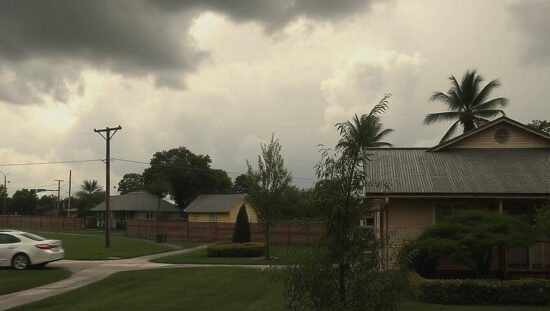July 2025 presented Germany with a fluctuating pattern of weather extremes. According to the German Weather Service (DWD), the average temperature for the month reached 18.4 degrees Celsius (65.1°F), exceeding the internationally recognized reference period of 1961-1990 by 1.5 degrees Celsius (2.7°F) – a period with an average of 16.9°C (62.4°F). While this figure surpassed the reference, it aligned with the average temperature of the more recent and warmer period from 1991-2020 (18.3°C/64.9°F).
However, the average temperature doesn’t fully reflect the diverse weather conditions experienced throughout July. The month began with a significant heatwave, culminating in a nationwide high of 39.3°C (102.7°F) recorded in Andernach, Rhineland-Palatinate, on July 2nd. This was followed by a sharp drop in temperatures, leading to a point where no summer days were registered across the country at the end of the first decade. A particularly cold day was July 10th, with a low of 3.5°C (36.5°F) recorded in Meßstetten, Baden-Württemberg, representing the nationwide lowest temperature.
While the southern half of the country experienced more frequent summer days subsequently, a renewed heatwave failed to establish itself. Rather, a northwesterly airflow towards the end of the month brought cooler temperatures and a lack of summer-like conditions, prompting the need for a light jacket rather than swimwear.
Precipitation levels were also markedly above average during July. The month saw 114 liters (approximately 30.3 gallons) of rain per square meter, representing a 47% surplus compared to the reference period of 1961-1990. This figure also exceeded the more recent reference period of 1991-2020 (87 liters/22.9 gallons per square meter) by more than 30%.
The north and northeastern regions of Germany, along with the Alpine foothills, were particularly affected, with some areas experiencing up to 450 liters (approximately 120 gallons) per square meter. These high precipitation levels were attributed to a trough of low pressure over Central Europe, which repeatedly generated showers and occasionally severe thunderstorms.
Sunshine hours were reduced compared to previous months. July 2025 registered 189 hours of sunshine, approximately 10% below the average for the reference period of 1961-1990. The deficit was even more pronounced when compared with the newer reference period of 1991-2020, where a shortfall of approximately one-sixth of the average sunlight hours was observed. The northern, northeastern and Alpine regions experienced noticeably lower sunshine durations, while the southwestern areas recorded more than 200 hours of sunshine.





